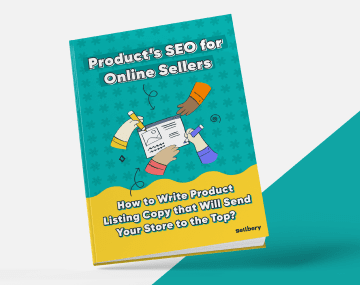
Boost your business with multichannel selling. Enhance reach, improve customer experience, and reduce risk by diversifying your sales channels effectively.
They say you can’t be everywhere at once. That’s true for living things, but business-wise, you can be everywhere at once by adopting a multichannel approach to selling products.
Undeniably, the more places your business appears, the more opportunities you get to connect with potential customers, right?
That’s what multichannel selling gets you: the chance to get your products seen on multiple channels, from your website, social media platforms, third-party marketplaces, and even in physical stores.
For those on the fence about finally going business multichannel because it’s unclear how it can elevate your business strategy, this guide will explore that, but before we dive into the specifics, let’s break down what multichannel selling is and why it’s vital for your business’s success.
Multichannel Selling 101: A Beginner’s Perspective
In its most basic sense, multichannel selling is simply the art of selling products or services across multiple sales channels. These channels could be online and offline, but integration is the trick to growth hacking this selling approach: all your sales channels should have symbiotic integration.
What does being omnichannel mean for the business? Since you can reach customers in different environments, you have more engagement opportunities and can expect the increased sales that usually germinate from that.
From a customer-facing perspective, whether customers shop through your website, an online marketplace, or a physical retail location, they will benefit from a smooth and cohesive customer and buying experience across all platforms.
For example, let’s say you sell custom clothing. You might have an online store, sell through Amazon, and even post your designs on Instagram to attract customers.
Multichannel selling promotes synchronicity across these various channels to ensure customers can buy from any platform but still experience the same level of service and product quality.
With that said, let’s see how being everywhere your customers are can transform your business.
8 Benefits of Selling Across Multiple Channels
1. Expanding Your Customer Base
What is your preferred mode of shopping? The answer normally varies from person to person, even for folks in the same household. The same goes for your customers, too.
While some customers prefer shopping on your website, others might be more inclined to browse and buy on platforms like Amazon, eBay, or Etsy. That makes it clear that the more places your customers can find you, the higher your chances of making a sale.
For instance, a local artisan jewelry maker might prefer to sell their creations on their eCommerce site.
However, they can reach a wider audience by having a presence on platforms like Etsy, Instagram Shops, and even Amazon. That’s the beauty of omnipresence: it increases the customer pool because each platform brings in a different type of shopper.
2. Tailored Business Solutions with Exclusive Leads
Selling through multiple channels gives businesses access to highly targeted, qualified leads, particularly when working with lead-generation partners.
For example, if you’re in the HVAC business, you can leverage HVAC leads from specialized platforms that provide exclusive leads from customers actively seeking HVAC services. These leads are valuable because they come from people already interested in your products or services, increasing the chances of conversions.
In this case, omnipresent HVAC companies can attract and nurture qualified leads seeking immediate services, thus increasing the likelihood of closing the deal quickly and efficiently.
3. Leveraging Automation for Seamless Operations
Running operations across multiple platforms can be time-consuming, but using integrated automation tools can help streamline the process. From automating email marketing campaigns to managing inventory across all your channels, AI-powered tools can handle many aspects of your business and free up valuable time you can use to focus on strategy.
Take the example of a company that sells home improvement products. By integrating their store with automated tools like QuickBooks, they can track stock levels, sales data, and customer information from various channels.
This synchronization saves time and ensures that operations run smoothly without hiccups, such as overselling on one platform while underselling in a ready market or failing to update inventory.
4. Boosting Brand Awareness
Every new platform you sell on is another opportunity to enhance brand visibility and recognition. The more channels you are on, the more touch points you have with potential customers.
For example, a business selling fitness equipment could post workout tips, product demos, and customer reviews on Instagram, create tutorials on YouTube, and run targeted Facebook Ads to reach users who follow fitness-related pages, all while posting funny exercise fails on TikTok.
Each channel caters to different types of customers but builds brand awareness in ways that simply relying on one channel would not. The more visible your brand is, the likelier the chances of stickiness in customers’ minds and the higher the chances of them coming to you when they need your products or services.
5. Improved Customer Experience
Multichannel selling ensures customers don’t navigate separate brand experiences on each platform. That’s crucial today because modern customers expect a cohesive and uniform experience, regardless of where they interact with your brand.
For example, a customer might find your product on TikTok, visit your website to learn more, and then purchase whatever they need from your business on Amazon. A well-synchronized customer journey ensures consistent branding, pricing, and inventory levels across all channels.
Using automation tools such as Shopify’s integration with Amazon and eBay can help ensure that product details, stock levels, and pricing remain the same no matter where a customer shops.
6. Mitigating Risk with Diversified Sales Channels
Relying solely on one sales channel can put your business at risk. Whether it’s a change in algorithm, a website crash, or market fluctuations, our constantly evolving tech space is rife with external factors that could impact sales on a single platform. By diversifying your sales channels, you spread this risk and create stability.
Take, for example, a business that only sells through its website. Such a business could lose significant sales should the website experience downtime or face a technical glitch. In contrast, let’s imagine the business also sells on Amazon, eBay, and Instagram. In that case, even with their website momentarily down, they can still generate revenue even if one channel faces an issue.
This diversification protects businesses against potential risks, provides a more stable sales flow, and ensures business continuity despite external challenges.
7. Optimized Marketing Strategies
The data gathered from different platforms helps you understand which marketing tactics work best for each platform and optimize your efforts accordingly.
For example, a clothing brand might use data analytics to discover that Instagram influencers drive more sales for their brand than Facebook Ads. They could then allocate more of their budget to influencer marketing on Instagram while optimizing their Facebook Ads for different objectives, such as customer engagement or brand awareness.
Moreover, you can use cross-channel promotions to boost sales. An ideal example is promoting a special offer or discount on your website through your Instagram account, prompting your users to visit your store and make a purchase.
8. Better Data and Analytics
With the help of AI-driven tools and data optimization technologies, businesses can analyze customer behavior across different platforms to identify trends and adjust marketing strategies accordingly.
For instance, let’s assume you sell home improvement tools across Amazon, your website, and Facebook Marketplace. With multichannel analytics tools like Google Analytics, you can track your sales sources, what products are popular on each platform, and even how your customers interact with your content, marketing copy, and ads.
This data allows you to adjust your marketing campaigns, product listings, and pricing strategies to match and mirror each platform’s audience.
Conclusion
As you can see from our discussion, multichannel selling is a powerful tool that gives your business a chance to stay ahead, connect with more customers, and adapt to changing consumer habits.
If you’re ready to expand your reach and see the impact firsthand, begin exploring new channels, experiment with your strategy, and watch as your business opens new growth doors you never knew existed.
Was this news helpful?







 Yes, great stuff!
Yes, great stuff! I’m not sure
I’m not sure No, doesn’t relate
No, doesn’t relate



